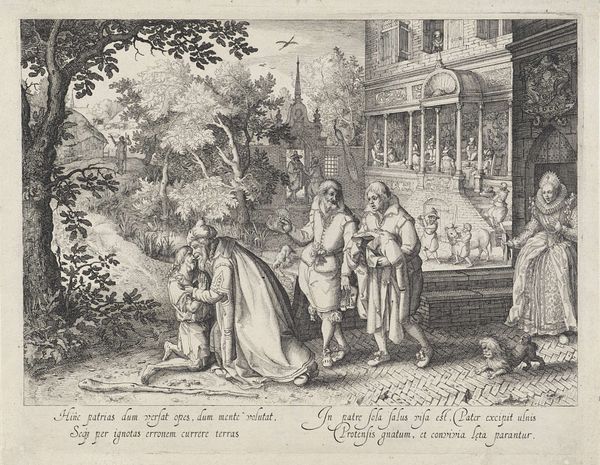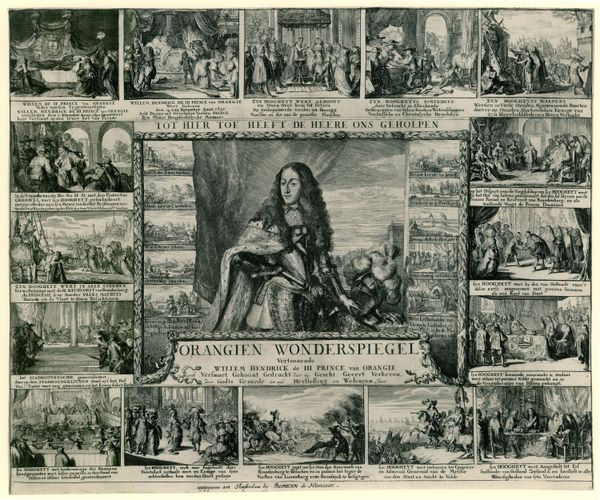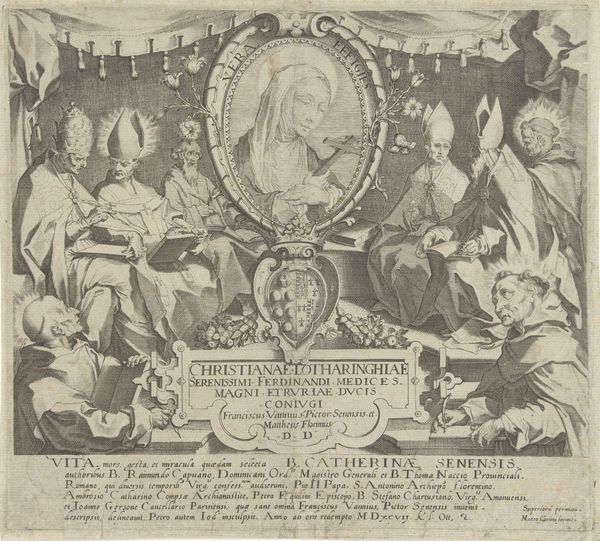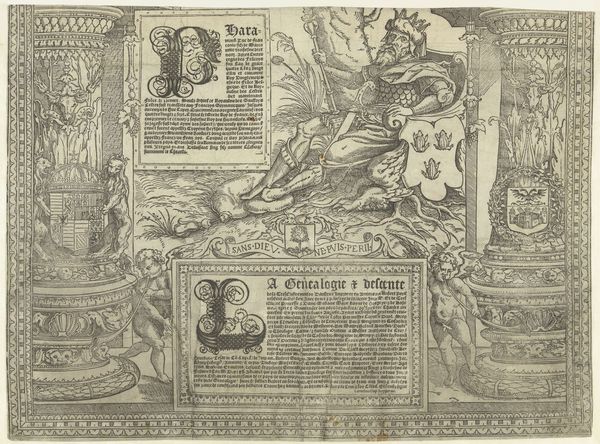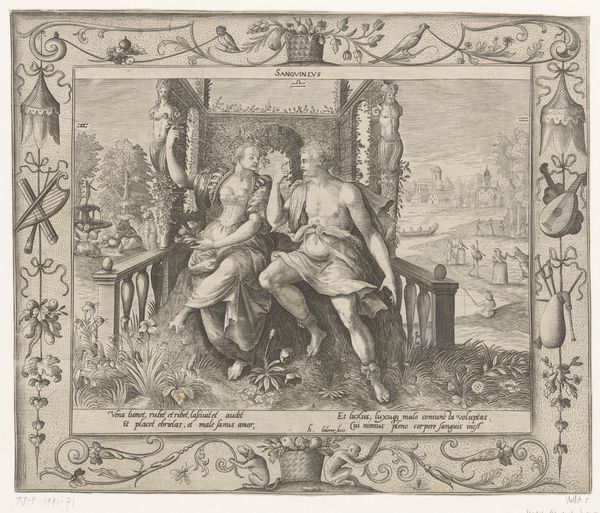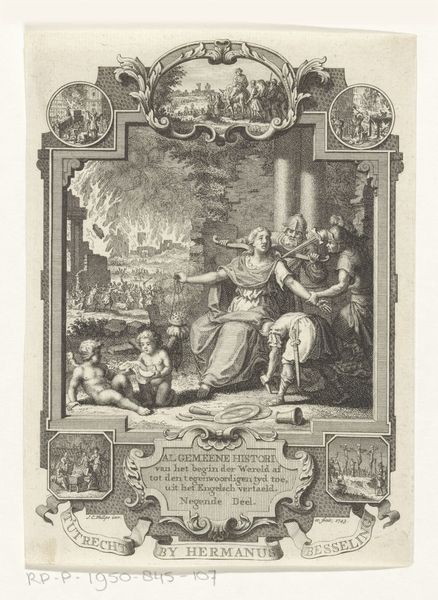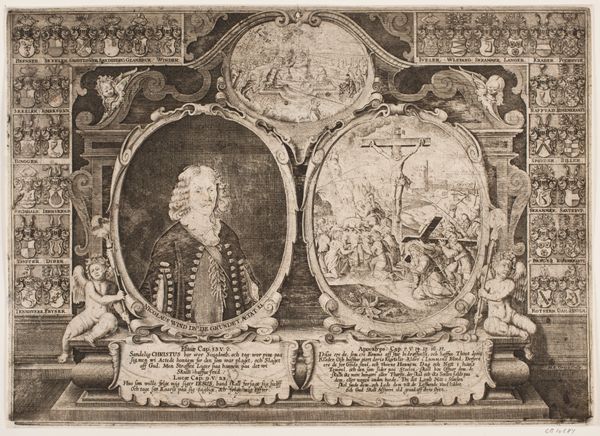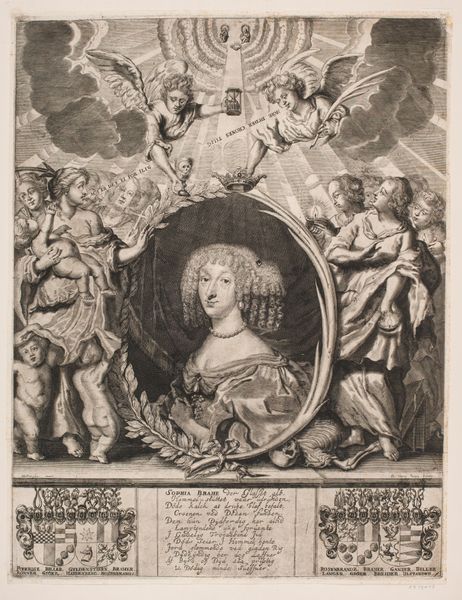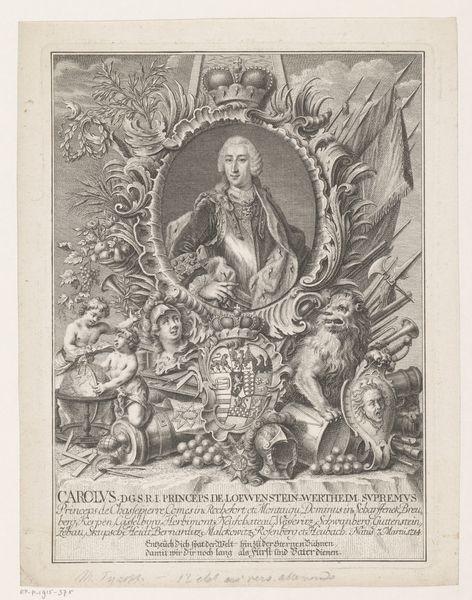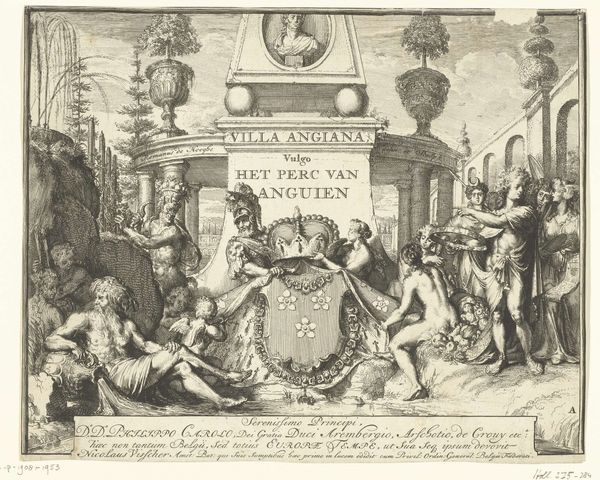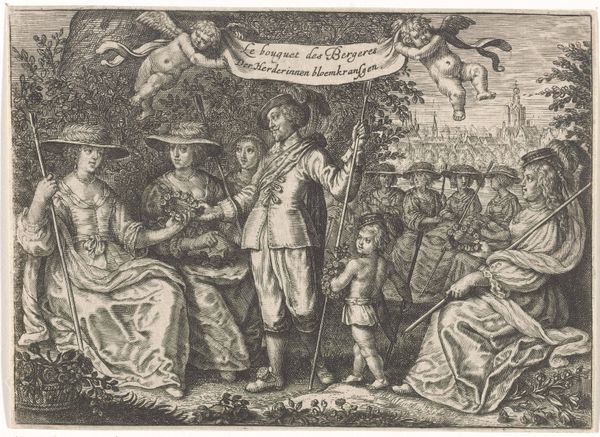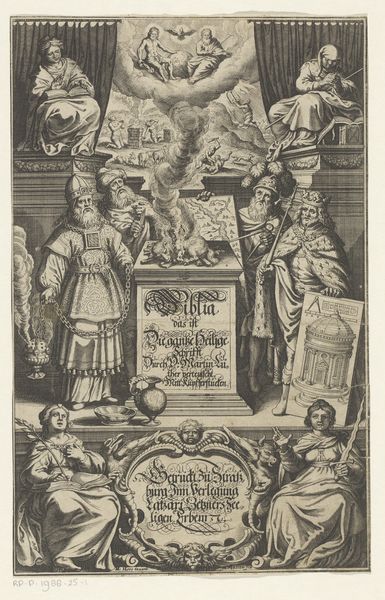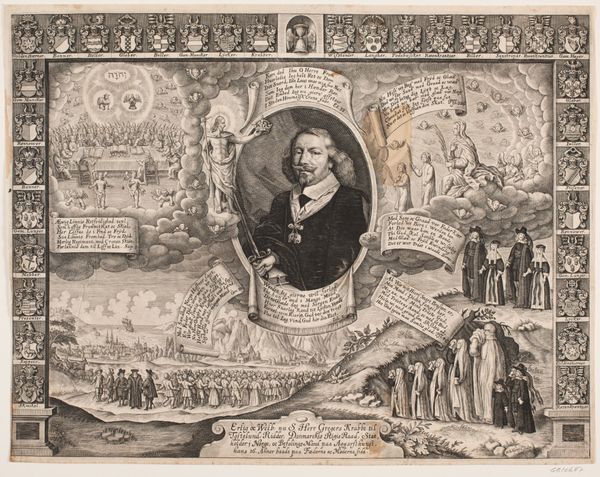
print, engraving
#
allegory
#
baroque
# print
#
landscape
#
figuration
#
engraving
Dimensions: 292 mm (height) x 369 mm (width) (bladmål)
Curator: Let’s discuss this intriguing 17th-century engraving, “Earth (Terra)", crafted around 1660. It resides here with us at the SMK, Statens Museum for Kunst. What are your first impressions? Editor: It strikes me as rather…uneasy. Despite the obvious abundance – the overflowing baskets of fruit, the lush landscape – there’s a definite stillness, almost a forced serenity about the central female figure. It’s like a facade. Curator: Absolutely. It is a Baroque allegory. She’s not just any woman; she embodies the very idea of "Terra," of the Earth. Note how the abundance ties into societal frameworks of class and consumption at the time. Editor: So, she is simultaneously a representation and a participant within a visual dialogue that perpetuates existing power dynamics. The way she delicately holds that fruit… almost like an offering or a symbol of control. Is there perhaps a tension there between fertility as bounty, and as a resource to be managed? Curator: Exactly. Remember, the Baroque period was rife with anxieties regarding resources, power, and the very nature of humanity's relationship with the natural world. The engraving becomes a potent commentary when viewed through that lens, wouldn't you agree? The abundance underscores the finite nature of these very things it depicts. Editor: Yes, especially considering that prints like these also circulated widely. Who had access to it, and how were those audiences likely interpreting this symbol of "Earth?" Was it meant to inspire a sense of connection or a reminder of the privileges enjoyed by some? It's interesting how what could be seen as beautiful and benevolent also reveals layers of complex political issues related to resource management and equity. Curator: And there is, undeniably, an undercurrent of idealised womanhood and expectations contained in the work. As an engraving designed for circulation, It tells the population more about their duties than it offers reverence for the planet. Editor: Well, this piece has certainly provided a more complex view of “Earth” than I initially considered. What began as disquieting has now clarified into potent commentary about how social structures inform representation and symbolism. Curator: Agreed. The ability of this 17th-century print to open new understandings of intersectional dynamics even in contemporary times, makes this Baroque era piece still important today.
Comments
No comments
Be the first to comment and join the conversation on the ultimate creative platform.

